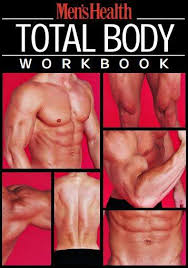Source(google.com.pk)
Men S Health Biography
Thought I'd take a moment to share some of the new Men's Health work we've been doing since I have been given the reigns of this beast (this honkin' thing's circ is more than my last three mags combined...oye).
The work, as always, in progress.
The overall theme throughout the book was to simplify in terms of art, typography and color pallette. Men's Health's tagline is indeed "tons of useful stuff"...and to add tons of fonts, colors and pictures to that is a seizure waiting to happen...or at least a headache.
Here are a few of the recently updated features.
Bulletins:
This has long been the most popular section of the magazine. It is essentially a news section where each page has a theme: health, sex, weight loss, muscle, etc.
One of the first things we wanted to do was give this section a proper opener. Previously, the Bulletins pages had just emerged from the front of book pages like the editor's letter and TOC with no real announcement as a section. Each issue we wanted to take the most visually interesting tidbit of info and blow it out as a full page image to start things off. We really liked the "latest news" approach to the edit and wanted to explore the idea of a center-axis identity system to mimic a newspaper or newsletter on the opener and then carry that through to the follow pages.In terms of hierarchy of info on the follow pages, it seemed more important that the reader immediately knew what each page was about as opposed to knowing what section he is actually in, so you'll notice the section name is secondary.
As we all know, it's been argued that few people (beyond people in the biz) navigate a magazine in order from front to back, so if someone happened upon a bulletins page we wanted it to be able to stand by itself.
Image-wise we wanted to reduce the number of images but up the size and quality of what we were showing, giving more room for great concept imagery by Levi Brown and others. In terms of typography and design we wanted things to be a bit more fluid and organic and not as square and formatted. The earlier experiments were basically type jam sessions where several of us would assemble interesting headline and text treatments (the rule being to only use 2 typefaces). We would then meet, pick our favorites and start piecing these bits together to see what combos yielded the most interest, the goal being to create a varied type palette that each designer could use in constructing a page.










Men S Health Biography
Thought I'd take a moment to share some of the new Men's Health work we've been doing since I have been given the reigns of this beast (this honkin' thing's circ is more than my last three mags combined...oye).
The work, as always, in progress.
The overall theme throughout the book was to simplify in terms of art, typography and color pallette. Men's Health's tagline is indeed "tons of useful stuff"...and to add tons of fonts, colors and pictures to that is a seizure waiting to happen...or at least a headache.
Here are a few of the recently updated features.
Bulletins:
This has long been the most popular section of the magazine. It is essentially a news section where each page has a theme: health, sex, weight loss, muscle, etc.
One of the first things we wanted to do was give this section a proper opener. Previously, the Bulletins pages had just emerged from the front of book pages like the editor's letter and TOC with no real announcement as a section. Each issue we wanted to take the most visually interesting tidbit of info and blow it out as a full page image to start things off. We really liked the "latest news" approach to the edit and wanted to explore the idea of a center-axis identity system to mimic a newspaper or newsletter on the opener and then carry that through to the follow pages.In terms of hierarchy of info on the follow pages, it seemed more important that the reader immediately knew what each page was about as opposed to knowing what section he is actually in, so you'll notice the section name is secondary.
As we all know, it's been argued that few people (beyond people in the biz) navigate a magazine in order from front to back, so if someone happened upon a bulletins page we wanted it to be able to stand by itself.
Image-wise we wanted to reduce the number of images but up the size and quality of what we were showing, giving more room for great concept imagery by Levi Brown and others. In terms of typography and design we wanted things to be a bit more fluid and organic and not as square and formatted. The earlier experiments were basically type jam sessions where several of us would assemble interesting headline and text treatments (the rule being to only use 2 typefaces). We would then meet, pick our favorites and start piecing these bits together to see what combos yielded the most interest, the goal being to create a varied type palette that each designer could use in constructing a page.
Men S Health
Men S Health
Men S Health
Men S Health
Men S Health
Men S Health
Men S Health
Men S Health
Men S Health
Men S Health
Men S Health
No comments:
Post a Comment